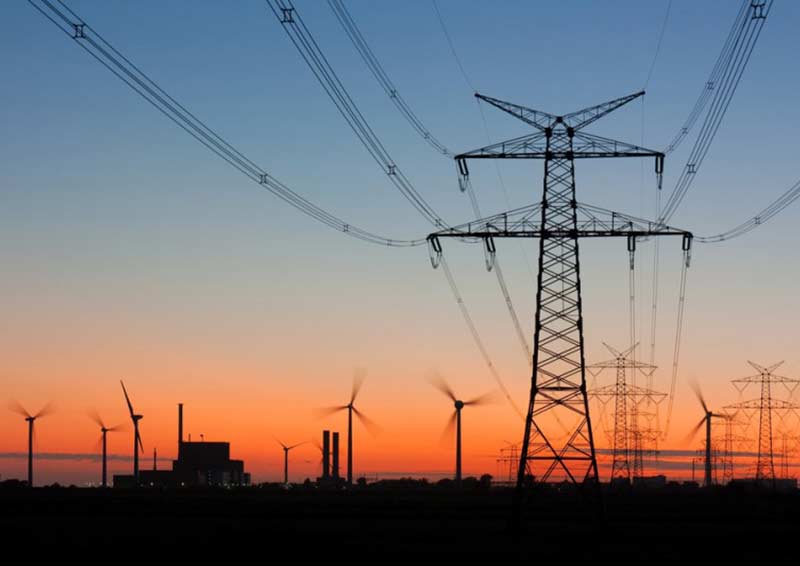Electrical energy
Electrical energy is the term given to energy that has been converted from electric potential energy. This electric potential energy has usually been in turn converted from another source of energy, through a process known as generation.
Electrical energy is supplied by a voltage (or electrical potential) delivered via an electric current.
Electrical power is defined as the rate at which electrical energy is transferred via an electrical circuit over a given amount of time. It is therefore the rate of ‘doing work’. The SI unit of electrical power is the watt, which equates to an energy transfer rate of 1 joule per second.
In the context of buildings, electrical energy is typically converted into other forms of energy, to serve useful purposes such as heating, lighting, motion or other forms of electrical power conversion.
Electrical energy for use in buildings is often supplied via a grid connection, and typically originates at a power station, where it has been generated by electro-mechanical generators. Electrical energy can by generated by many means, such as chemical combustion, nuclear fission, or renewable means such as flowing water, wind, geothermal heat and solar voltaic.
Equally, electrical energy may be generated at the building itself, typically either via solar voltaic, localised electromechanical generators or other renewable sources. Such energy may be used locally within the building or may be exported back into the grid for use by other consumers. Where this latter facility exists, the building and its system are referred to as a ‘prosumer’ – i.e. a simultaneous producer and consumer of electrical energy.
--ECA
[edit] Related articles on Designing Buildings
- Ampere.
- Articles about electricity.
- BEAMA.
- Consumer electronics.
- Consumer units.
- ECA articles.
- ECA.
- Electric lock.
- Electric motor.
- Electrical appliance.
- Electrical consumption.
- Electrical equipment.
- Electrical installation.
- Electrical power.
- Electrical safety.
- Electrician.
- Electricity bill.
- Electricity supply.
- Glossary of electrical terms.
- IET announces release of 18th Edition Amendment 2.
- Voltage.
- Watt.
Featured articles and news
Latest Build UK Building Safety Regime explainer published
Key elements in one short, now updated document.
UKGBC launch the UK Climate Resilience Roadmap
First guidance of its kind on direct climate impacts for the built environment and how it can adapt.
CLC Health, Safety and Wellbeing Strategy 2025
Launched by the Minister for Industry to look at fatalities on site, improving mental health and other issues.
One of the most impressive Victorian architects. Book review.
Common Assessment Standard now with building safety
New CAS update now includes mandatory building safety questions.
RTPI leader to become new CIOB Chief Executive Officer
Dr Victoria Hills MRTPI, FICE to take over after Caroline Gumble’s departure.
Social and affordable housing, a long term plan for delivery
The “Delivering a Decade of Renewal for Social and Affordable Housing” strategy sets out future path.
A change to adoptive architecture
Effects of global weather warming on architectural detailing, material choice and human interaction.
The proposed publicly owned and backed subsidiary of Homes England, to facilitate new homes.
How big is the problem and what can we do to mitigate the effects?
Overheating guidance and tools for building designers
A number of cool guides to help with the heat.
The UK's Modern Industrial Strategy: A 10 year plan
Previous consultation criticism, current key elements and general support with some persisting reservations.
Building Safety Regulator reforms
New roles, new staff and a new fast track service pave the way for a single construction regulator.
Architectural Technologist CPDs and Communications
CIAT CPD… and how you can do it!
Cooling centres and cool spaces
Managing extreme heat in cities by directing the public to places for heat stress relief and water sources.
Winter gardens: A brief history and warm variations
Extending the season with glass in different forms and terms.
Restoring Great Yarmouth's Winter Gardens
Transforming one of the least sustainable constructions imaginable.
























